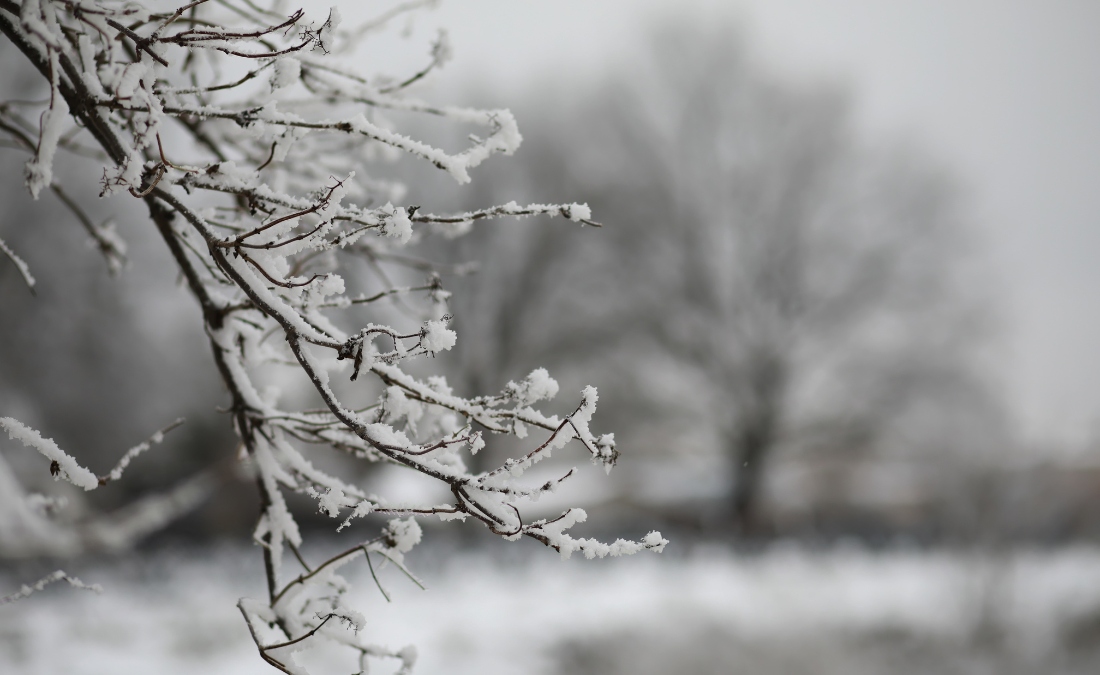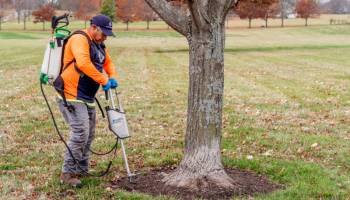4 Drought-Tolerant Trees to Plant in Your Kansas City Yard
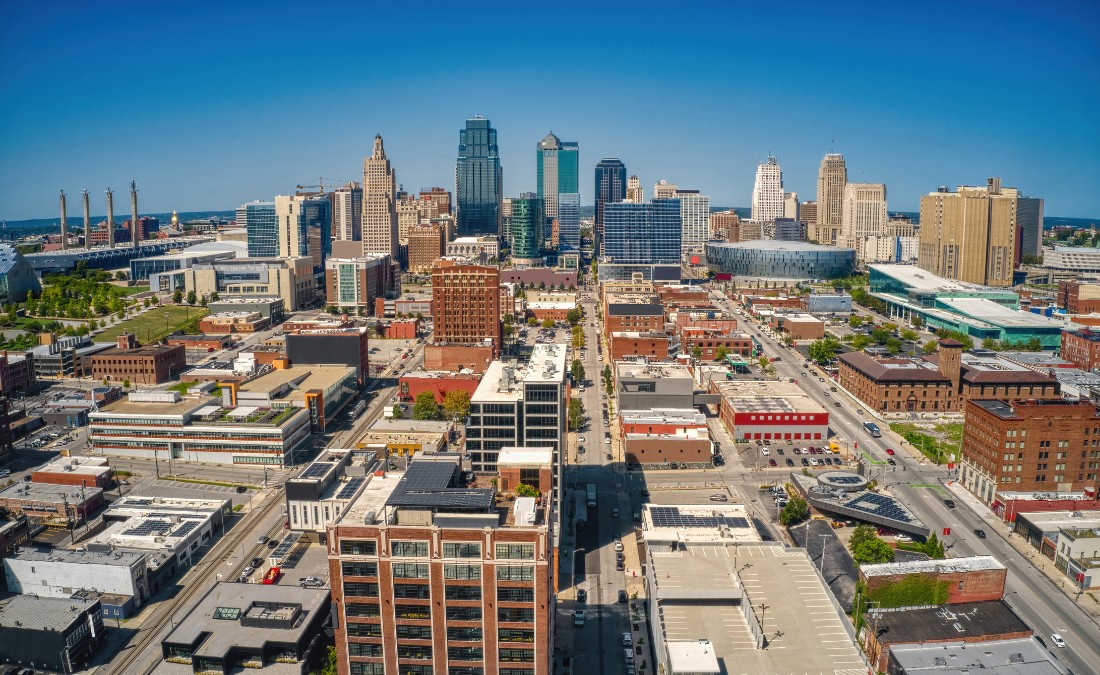
Worried about drought conditions killing a tree? Consider planting one of these drought-tolerant trees that will thrive, even when we see a lack of rain.
Caring for trees during Kansas City’s hot, dry summers can feel like an uphill battle. Especially when you’re constantly dragging out the hose or watching leaves curl from heat stress. Instead of pouring time and money into high-maintenance trees, it might be time to rethink your choices. These four drought-tolerant trees don’t just survive the elements, they thrive in them, offering shad, beauty, and curb appeal with far less effort.
Key Takeaways
- Kansas City is expected to face more drought in 2025, so it’s important to choose trees that can handle dry conditions.
- Top drought-tolerant picks include swamp white oak, Kentucky coffeetree, shantung maple, and hackberry – all tough, attractive, and well-suited for urban yards.
- Even drought-tolerant trees need some extra water during long dry spells.
- Help your trees during drought by adding 2-4 inches of mulch and avoiding pruning or fertilizing when it’s dry.
- Always consider your soil type and space before planting and talk to a Certified Arborist to make the best choice for your yard.
4 Drought-Tolerant Trees Perfect for Your Kansas City Property
Of all the challenges trees face, prolonged drought ranks among the toughest. With forecasts expecting more drought conditions in 2025, it’s more important than ever to take care of your trees when they don’t get enough water.
Trees are all different, and some have more natural resistance to drought conditions than others. These drought-tolerant trees are less likely to show stress during dry conditions and can better survive until they get water.
Four drought-tolerant trees to consider for your Kansas City property include:

Swamp White Oak photo by Bruce Marlin, CC BY-SA 2.5, via Wikimedia Commons
1. Swamp White Oak (Quercus bicolor)
Despite the name, the swamp white oak is a perfect landscape tree with a surprising amount of drought resistance. While this oak prefers the soil to be moist, it can survive in moderate drought conditions. Just be sure to provide supplemental water as needed to help it until the rain returns.
Other than their drought tolerance, swamp white oaks are generally durable and easy to care for. They can grow in many conditions and are exceptionally tolerant of poor drainage compared to other oaks.
Like all oaks, the swamp white oak can face some health challenges. The most serious is oak wilt, a fungal disease that affects oaks across the region. Fortunately, with proper care – like pruning only in winter and working with a Certified Arborist for preventive treatments – the risk can be significantly reduced.
It may also encounter minor issues like anthracnose, but these are typically manageable with routine monitoring and maintenance.
Swamp White Oak Fast Facts
- Mature Height: 50-60 feet
- Mature Width: 50-60 feet
- Soil Preference: Moist, well-drained soil
- Daily Sunlight: Full sun (6 hours)
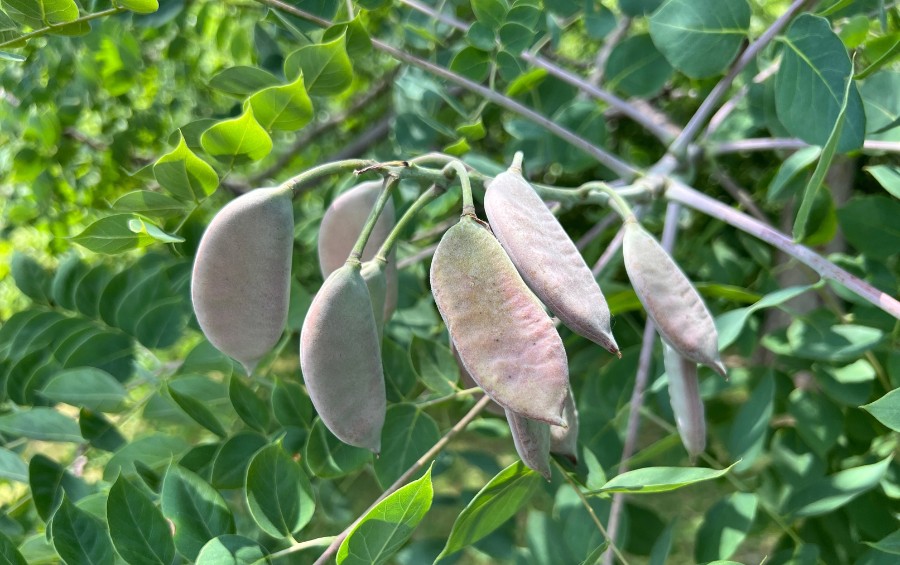
2. Kentucky Coffeetree (Gymnocladus dioicus)
The Kentucky coffeetree grows across much of America, including here in Kansas City. The reason for its incredibly far reach is simple: it is one of the most durable and adaptable trees you’ll find once it establishes.
The tree can tolerate many different types of conditions and soil types. In addition to its drought resistance, it can tolerate pollution, making it well equipped to deal with Kansas City’s urban environment. It also has a distinctive leathery, reddish-brown seed pod that gives it interest year-round.
The Kentucky coffeetree is one of the easiest trees to grow, and it faces no major pest or disease problems. Once established, it should be a perfect addition to your property. The only major drawbacks are the leaves and seedpods, which can create litter problems, and lawnmowers can launch them.
Kentucky Coffeetree Fast Facts
- Mature Height: 60-80 feet
- Mature Width: 40-55 feet
- Soil Preference: Moist, well-drained soil
- Daily Sunlight: Full sun (6 hours)
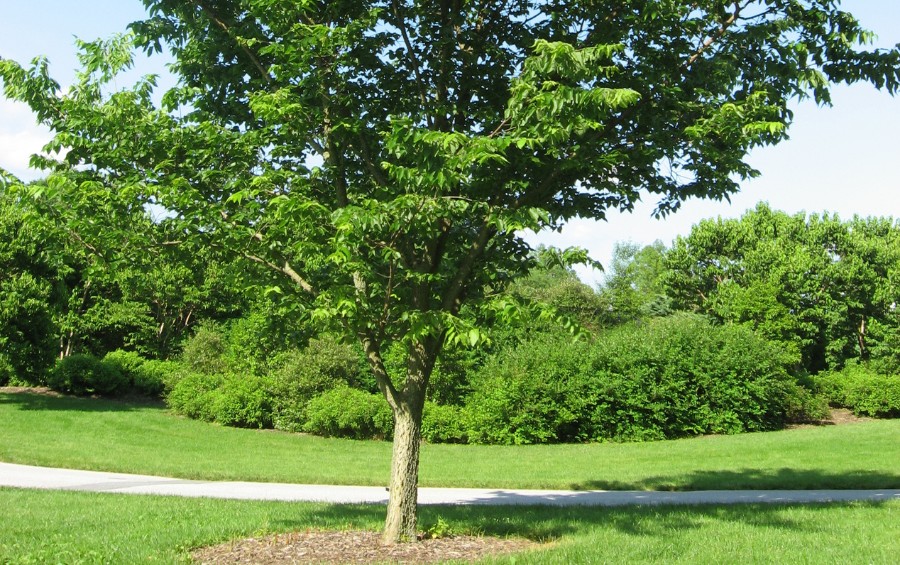
Photo by Mark Wagner, CC BY 2.5, via Wikimedia Commons
3. Shantung Maple (Acer truncatum)
When it comes to maples, there is a wide variety to choose from. If you want something smaller and less common, consider the shantung maple. This native of Asia grows well in Kansas City and has some of the best drought and heat tolerance of maples.
Unlike most maples that are towering shade trees, the shantung maple is much more compact and can fit in urban yards where space is at a premium. The trees have excellent fall colors, with a mix of oranges and yellows.
The shantung maple does come with a few risks, including susceptibility to verticillium wilt and anthracnose. It is also known as a “bleeder,” meaning it can lose a lot of sap if pruned in spring – so it’s best to wait until late summer or fall for any major pruning.
Shantung Maple Fast Facts
- Mature Height: 20-25 feet
- Mature Width: 15-20 feet
- Soil Preference: Acidic, moist, and well-drained soil
- Daily Sunlight: Full sun (6 hours) or Partial sun (4-6 hours)
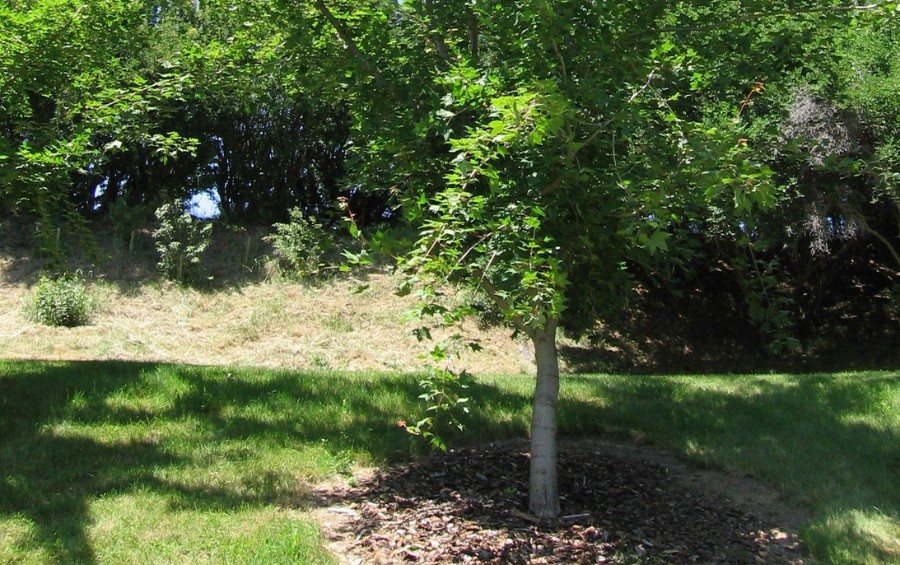
4. Hackberry (Celtis occidentalis)
The hackberry is a favorite of homeowners in urban areas for its adaptability and resistance to many of the common problems that doom urban trees. Along with drought, the hackberry tolerates multiple soil conditions and pollution.
The hackberry is a perfect addition if you want to give your home a more natural look. The tree’s fruit attracts birds, and many of them will build nests in hackberries. You can eat the fruit as well.
In most circumstances, hackberries are a low-maintenance tree, but they still have a few common problems. Most notably, they are susceptible to hackberry nipple gall and witches’ brooms. While neither issue is life-threatening, they can harm the leaves and appearance of your tree. Hackberries are also susceptible to powdery mildew.
Hackberry Fast Facts
- Mature Height: 40-60 feet
- Mature Width: 40-60 feet
- Soil Preference: Alkaline, moist, and well-drained soil
- Daily Sunlight: Full sun (6 hours), partial sun (4-6 hours)
Frequently Asked Questions About Drought-Tolerant Trees
We understand that picking a tree can be complicated, and understanding the nuances between different species can be difficult for a homeowner. To help you plan what trees to pick and how to keep them thriving, we’ve answered some common questions homeowners have about the topic.
Will I need to water drought-tolerant trees during dry conditions?
Depending on the severity of the drought and its conditions, you may still need to water a tree, even if it has a natural drought tolerance. Without water, a tree cannot use its nutrients and will eventually die. Drought-tolerant trees are better at surviving when it is dry, but even they have limits. Provide supplemental water if they show signs of drought stress (like wilted leaves).
What are some ways to help trees dealing with drought in Kansas City?
Aside from providing supplemental water, there are many things you can do to help your Kansas City tree during a drought. Ensure you have a 2 to 4-inch layer of mulch around the tree’s drip line (the area under the canopy) to help retain moisture and regulate soil temperature. Avoid doing significant pruning or applying fertilizer during a drought, as this can stress the tree.
How do I know if a tree will grow in my yard before I plant it?
Some of the things to consider when planning whether you can grow a tree in your yard include:
- Do you have adequate space for the tree when it reaches its mature height and width?
- Have you had a professional perform a soil test to determine any nutrient deficiencies?
- What kind of soil do you have?
- How have other trees and plants grown on your property in the past?
If you aren’t sure about your property’s ability to sustain trees, consider talking with an arborist from Arbor Masters.
Is it okay to plant a tree that is not drought-tolerant?
Yes, you can plant trees that do not have drought tolerance in Kansas City. However, if you choose to plant these trees, you must give them extra care and attention whenever drought conditions hit our area. Planting more durable and adaptable trees like the Kentucky coffeetree or shantung maple will lead to less work for you and healthier trees during a dry period.
Need Help Planting or Caring for Your Tree? Arbor Masters Can Help!
When you want a tree that is more low-maintenance and doesn’t require as much work, consider planting any of these drought-tolerant trees. These durable and adaptable species thrive in Kansas City’s often harsh climate. If you’re worried about correctly planting your sapling or caring for it as it grows, the professional team at Arbor Masters can help.
Our Kansas City team contains numerous ISA Certified Arborists who are experts in their field. They can recommend future care, regularly trim your trees, and even help with planting. Call us today at 816-781-8914 or request a quote online.

Get the latest local news, tree care tips, special offers, and company updates directly to your inbox! It's easy to subscribe and there's no spam - we promise.
"*" indicates required fields




